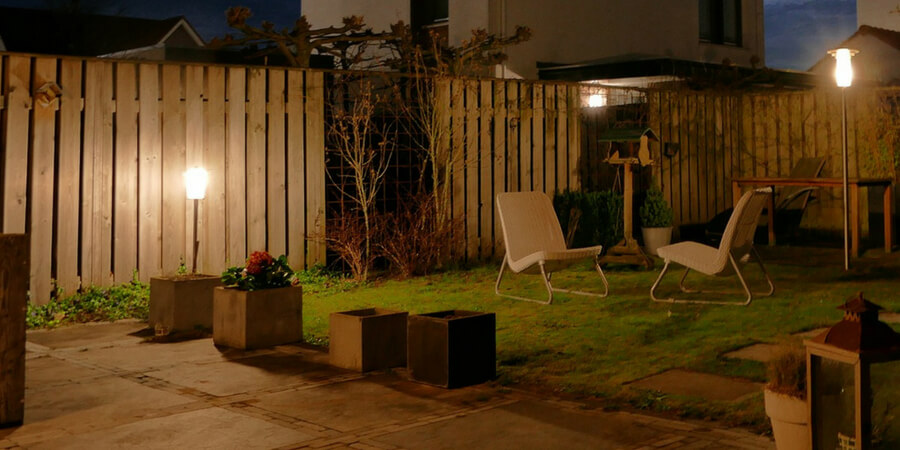Landscape lighting is a vital aspect of your home’s exterior design that can significantly enhance the beauty and safety of your garden. By strategically placing lights in your yard, you can create a magical and inviting atmosphere while illuminating areas that need extra visibility, such as pathways and steps. This guide will explore the different types of Outdoor lighting and provide tips on creating a functional and aesthetically pleasing landscape lighting design.
Types of Landscape Lighting
Pathway Lighting
Pathway lighting is essential to any outdoor lighting design, providing visibility and safety along walkways and steps. Pathway lights can be installed along the edges of a path or embedded in the ground for a more subtle look. Solar-powered pathway lights are an excellent option for those looking for an environmentally friendly and low-maintenance option. Pathway lighting can also serve as a design element by adding an extra layer of style to your garden.
Spot Lighting
Spotlighting is a type of landscape lighting focusing on a specific area or object, such as a tree, statue, or water feature. Spotlights can highlight particular features in your garden, creating an eye-catching and dramatic effect. Spotlights are also an excellent option for illuminating dark corners of your yard or highlighting areas that need extra visibility. They can also accentuate the texture and shape of plants, adding an extra layer of interest to your garden.
Flood Lighting
Flood lighting is a type of landscape lighting that provides a wide and even spread of light over a large area, such as a patio or deck. Floodlights can illuminate the surrounding area, making it safer and more inviting. They can also provide an extra layer of security by illuminating dark areas of your yard. Flood lights are often mounted on poles, walls, or the ground and are available in both LED and traditional options.
Accent Lighting
Accent lighting is a type of landscape lighting used to add interest and texture to your garden. Accent lights can highlight specific features, such as walls, plants, or architectural details. Accent lighting can also create a warm and inviting atmosphere by casting a soft glow over your outdoor space. Accent lighting can be achieved using various lighting techniques, such as uplighting, downlighting, or cross-lighting.
Tips for Designing a Landscape Lighting Plan
- Determine Your Goals: Before planning your landscape lighting design, consider what you want to achieve with your lighting, such as highlighting specific features, adding ambience, or enhancing safety.
- Consider the Layout of Your Garden: When planning your landscape lighting design, consider the layout of your garden, including the location of trees, plants, water features, and other elements. Also, ensure that your lighting plan is both functional and aesthetically pleasing.
- Use a Mix of Lighting Types: To create a well-balanced and exciting lighting design, it’s essential to use a mix of lighting types. For example, pathway lighting provides visibility and safety along walkways, spotlights highlight specific features, and floodlights illuminate large areas.
- Hire a Professional: If you’re not confident in your ability to design and install your landscape lighting, it may be best to hire a professional. A professional landscaping and lighting designer will have the expertise and experience to create a functional and aesthetically pleasing lighting plan that meets your specific needs and goals.
Outdoor lighting can significantly enhance the beauty and safety of your home’s exterior design. You can create a magical and inviting outdoor space by considering the different types of landscape lighting and tips for creating a functional and aesthetically pleasing lighting design. Whether you plan to do it yourself or hire a professional, the possibilities for your landscape lighting design are endless.

